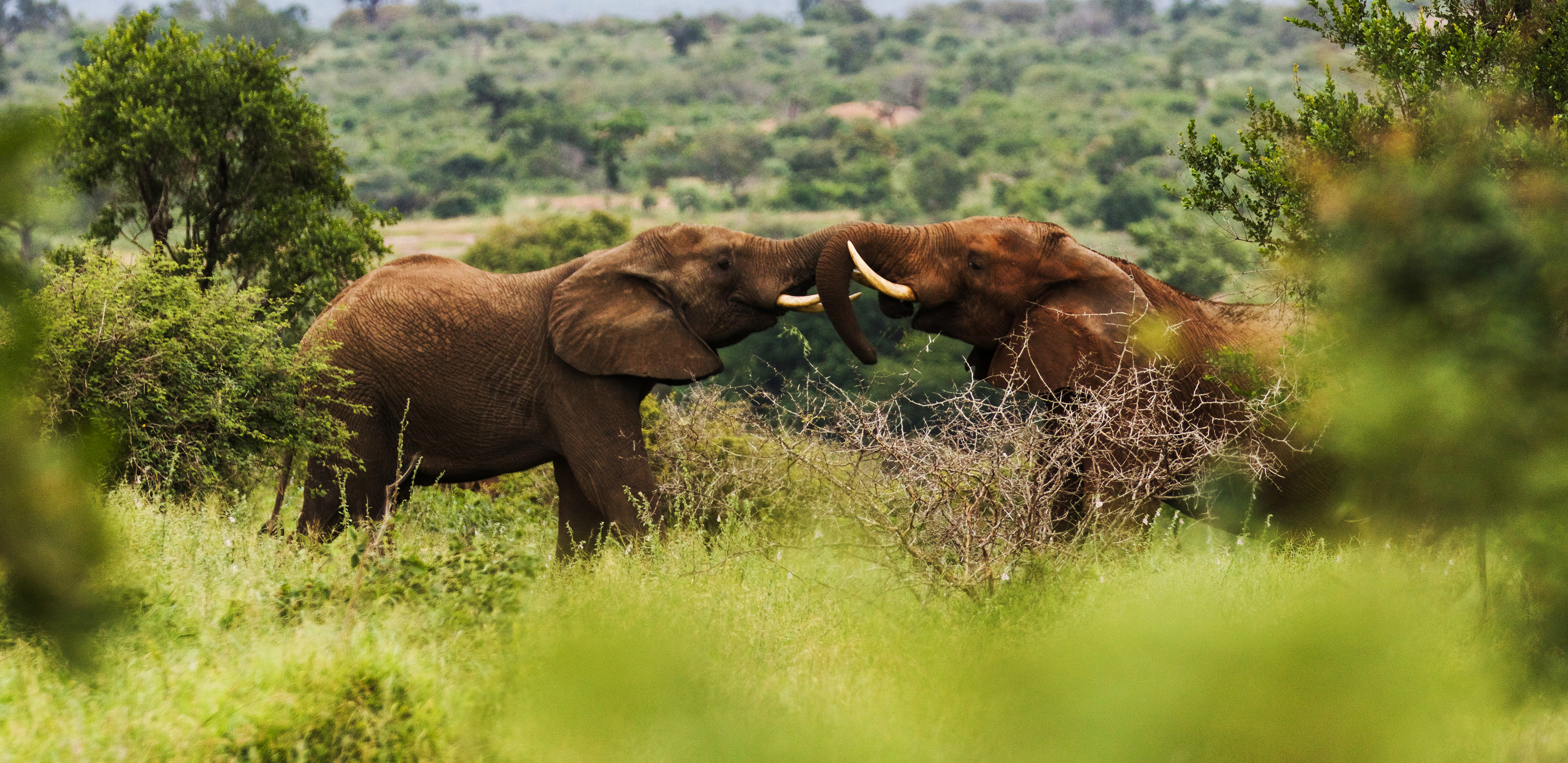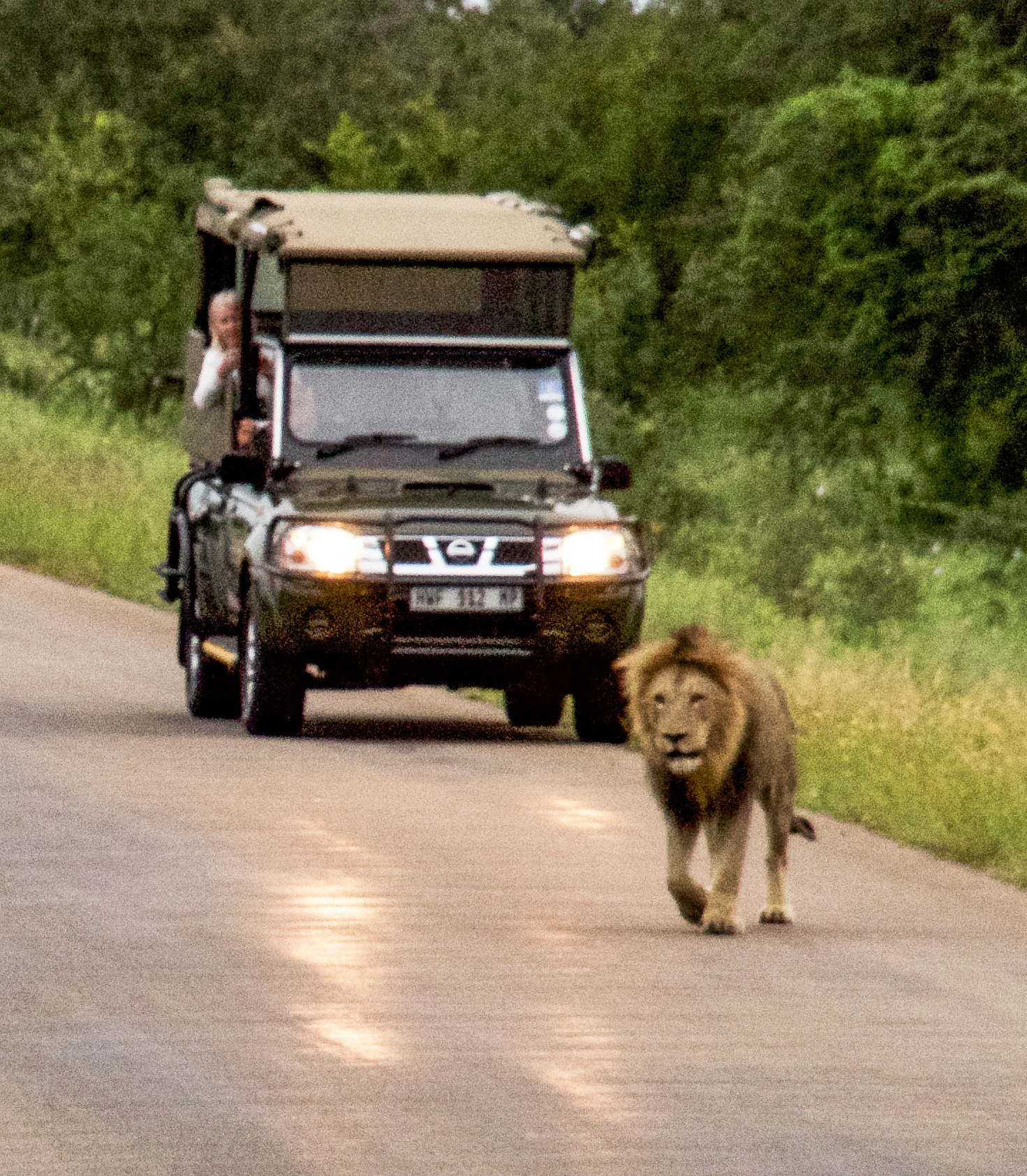BETHLEHEM, SOUTH AFRICA — An African safari is something I’ve wanted to do ever since watching Out of Africa with my mom as a teen. The high cost of a fully guided, catered safari, however, was something I wanted to avoid. So, when my boyfriend, Dave, and I were given the opportunity, while travelling in South Africa, to borrow a friends’ bakkie (slang for a small pick-up truck), and head to Kruger National Park on a three-day, self-guided safari tour, we were already running out the door with our cameras before they could even toss us the keys.
It took us 10 hours to drive to Kruger from our friends’ farm in Bethlehem, a small city in the eastern Free State province of South Africa. Google Maps said six, but we had to account for the pouring rain and our first time driving a vehicle on the left side of the road.
Kruger is one of the largest game reserves in all of Africa, covering an expanse of almost 5 million acres. It became South Africa’s first national park in 1926.

Above: Elephants battling for territory is just one of the awesome sights Heather and Dave saw on their safari.
Along the drive, Dave and I talked about all the animals we hoped to see. I was smitten with elephants after recently reading a book called Leaving Time, by Jodi Picoult. Zebras, giraffes and lions were also high on my list. Dave hoped we’d find the Big Five, a term that was used to describe the five most dangerous animals to hunt in South Africa. In modern day, it means the most exciting animals to view while on safari in Kruger: elephants, rhinos, buffalo, leopards and lions.
Dave had brought over some cumbersome camera gear from home he hoped to use for just this type of adventure photography. I had also decided to ditch my point-and-shoot and splurged on a new mirrorless camera with a 14-150mm lens.
Our first night was spent in a campground just outside the park’s entry that our friends had recommended. It had clean bathrooms and a roof over our site for shelter from the sun and/or rain. When we woke up the next morning, I learned in a text from my mom that my grandmother had passed away — a sad fact to carry with me the rest of the day. However, we saw a beautiful bird within hours of entering the park, that seemed to stick with us throughout the day. As my grandma was a colourful bird herself, who loved travelling and always wanted to go on a safari, I chose to think this was her way of wiggling herself onto our trip. We were happy to have her along.
One of the first things Dave and I did once entering the park was foolish. We saw a huge pile of elephant poo and I told Dave he should get out so I could take a photo of him for perspective. We both jumped out of the truck and ran over to the poo pile, having no idea of the risk we’d just taken. We took the photo, jumped back in the bakkie and drove further down the road. I yelled for Dave to stop at one point when we saw our first giraffe. Jumping out of the truck again, I ran a few metres back with my camera. A car came by, honked and its occupants yelled, “Get back in your car!”
It suddenly donned on me what a stupid tourist move we’d both made in a matter of minutes. What were we thinking? We both found it strange there were no signs, nor was anything said at the gate, but in Africa, if you’re too stupid to know better, well that’s your problem.


Left: From a safe distance, Dave takes some photos. Right: Am elephant sizes up our couple.
Our first day on our self-guided safari tour was exceptional. We saw zebras, elephants, buffalo, baboons, monkeys, giraffes, springboks and cheetahs, not to mention hundreds of birds and other critters. We were stopped once by a 4x4 coming in the opposite direction telling us to hurry down the road about five km and take the first right as there was a python consuming a rabbit. We passed a road on our left but kept driving. After about 10 km, we didn’t see any more roads and soon realized they must have meant their right and we should have taken the left road. We decided just to carry on as the snake had likely moved off by now. But we were sad to have missed this scene, which is incredibly rare, even on guided tours.
Our second night was spent in the Satara campground. South African National Parks (SAN Parks), is an impressive organization and we could pre-book our campsites and pay park fees through their website. Once we arrived, we found the facilities to be top-notch, plentiful and a welcome reprieve from the hot African sun. A pleasant surprise was the cooking areas at each campground, which were open concept but under shelter and even had huge canteens inside with on-demand hot water for making tea, coffee or instant soups and porridge.
That evening, we booked a guided safari tour, thinking we’d have a good chance of seeing some more nocturnal creatures and maybe even some lions.
The first two hours of the drive were uneventful animal wise but interesting history wise as the guide told us stories along the way. Finally, we saw a lion coming down the pavement toward us, her gait swift and confident. Everyone jumped up and leaned out the sides of the safari truck for photos. Not long behind her came a male in hot pursuit. They passed us by mere metres away and the driver turned around and started following from a safe distance.
 Left: Lions are the king of the road in Kruger National Park
Left: Lions are the king of the road in Kruger National Park
By the end of our safari trip in Kruger National Park, Dave and I had seen more flora and fauna than we could have imagined. Of the Big Five, we saw rhinos, elephants, lions and buffalo. We missed seeing leopards but did see cheetahs.
It was definitely worth the expense and inconvenience of travelling with heavy camera gear. Dave discovered a new love for wildlife photography and I an interest in macro shots.
As we’d visited in February, during the rainy season, we were very lucky to see as much as we did. Tour guides will likely recommend the dry season as the park comes alive with action.
There are diverse collections of animals, small and large, at the watering holes as this is the only place to find hydration. Because of this, you are more likely to see nature’s survival of the fittest at its peak when fights break out among predators and the wild kill for food. This isn’t something I really wanted to see, though, and was happy we found the park’s residents spread widely throughout their habitats, looking relaxed, hydrated and picture-perfect. •
About the Author
Heather Lea has had over two decades of freelance writing experience with over 60 published articles and stories in various travel and outdoor publications. From 2005 to 2015, she founded and operated an arts and culture magazine in Revelstoke, B.C. before selling her business to help fund her trip around the world. More stories of Heather's adventures can be found at http://www.ridingfullcircle.com